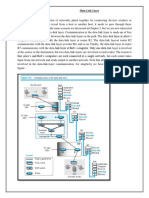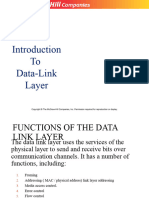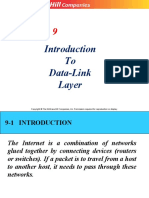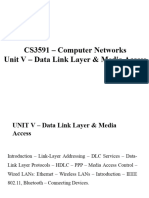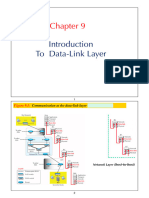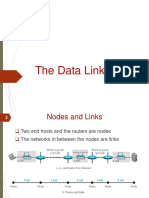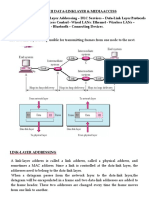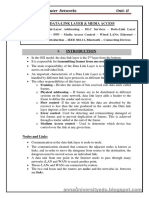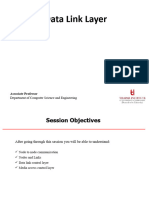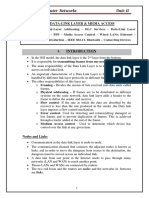0% found this document useful (0 votes)
3 views17 pagesIntroduction To Data-Link Layer
Chapter 9 introduces the data-link layer, which facilitates communication between nodes in a network by managing data framing, flow control, error control, and congestion control. It explains the importance of link-layer addressing, including unicast, multicast, and broadcast addresses, and the role of the Address Resolution Protocol (ARP) in mapping IP addresses to link-layer addresses. The chapter emphasizes that data units must pass through multiple networks and routers, with link-layer addresses changing at each hop between links.
Uploaded by
deshani bandaraCopyright
© © All Rights Reserved
We take content rights seriously. If you suspect this is your content, claim it here.
Available Formats
Download as PDF, TXT or read online on Scribd
0% found this document useful (0 votes)
3 views17 pagesIntroduction To Data-Link Layer
Chapter 9 introduces the data-link layer, which facilitates communication between nodes in a network by managing data framing, flow control, error control, and congestion control. It explains the importance of link-layer addressing, including unicast, multicast, and broadcast addresses, and the role of the Address Resolution Protocol (ARP) in mapping IP addresses to link-layer addresses. The chapter emphasizes that data units must pass through multiple networks and routers, with link-layer addresses changing at each hop between links.
Uploaded by
deshani bandaraCopyright
© © All Rights Reserved
We take content rights seriously. If you suspect this is your content, claim it here.
Available Formats
Download as PDF, TXT or read online on Scribd
/ 17













